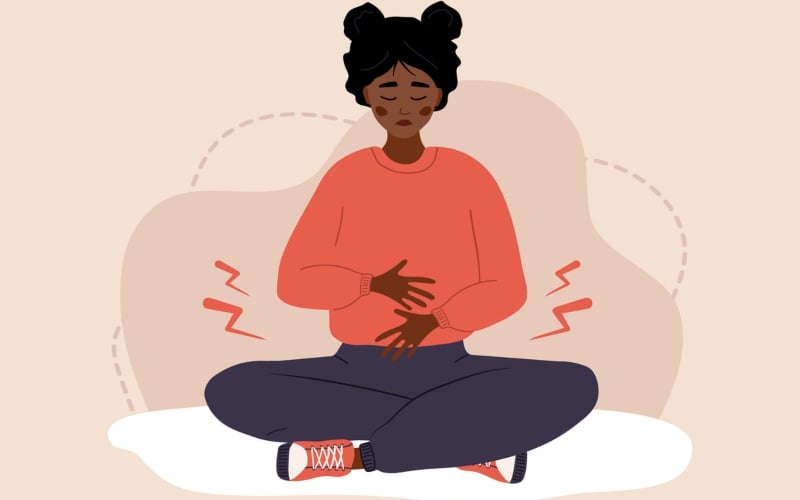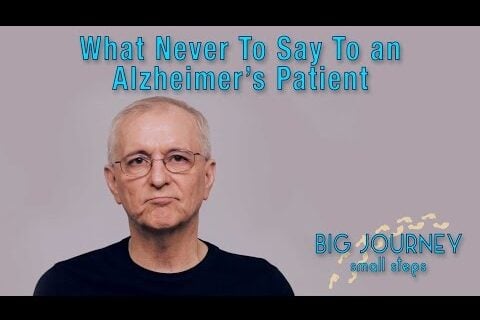By Nadia Hlebowitsh
This article has been medically reviewed by Dr. Martin Duggan in 2021
This content is not intended to be a substitute for professional medical advice, diagnosis, or treatment. Always seek the advice of your physician or another qualified health provider with any questions you may have regarding a medical condition.
Terminal lucidity may bewilder loved ones, but it’s a widely reported phenomenon. In essence, it’s a moment of mental (and sometimes spiritual) clarity that some cognitively impaired patients experience on their deathbeds. If you’ve seen this phenomenon firsthand, you know that it can be a bit mystifying. Let’s go over terminal lucidity so that you understand this experience and how best to cope with it.
Experiencing terminal lucidity
What is terminal lucidity?
Terminal lucidity, also known as an “end-of-life rally,” is a state of mental clarity that cognitively impaired patients experience near their deaths. Some describe it as temporarily “getting back” their loved ones. While it’s been documented by doctors for 200+ years, it’s still somewhat of a medical mystery.
How long does terminal lucidity last?
It may last minutes, hours or days. The experience of this phenomenon varies greatly. However, one common characteristic is that it’s temporary. Memory loss or cognitive impairment may return quickly, which may be confusing to loved ones.
What is the experience of terminal lucidity like?
Terminal lucidity is largely anecdotal, which means that every patient’s experience is unique. Some common aspects may include the patient coming out of an unconscious state, recognizing loved ones, having less severe physical symptoms, becoming verbal or otherwise expressing cognitive abilities beyond their illness.
In addition to unusual mental abilities, some patients also show positive changes in their spirits and appear to have an elated mood. They may even recognize that they’re approaching death and speak to loved ones in a spiritualized way.
Patients experiencing it may even ask to see a specific person or object that gives them a sense of closure or reminds them of the past. If possible, it’s a good idea to seek out this person or object to bring your loved one some joy in their final moments.
Terminal lucidity is sometimes described as the patient temporarily “waking up” from their illness and understanding what’s happening around them. During this phenomenon, some are able to have a moment of closure or peace as loved ones are able to communicate with the patient and say their goodbyes.
Is terminal lucidity a spiritual or supernatural experience?
Terminal lucidity refers to the change to a clear and alert mental state. The reported phenomenon refers to this temporary relief of illness symptoms and nothing more. Therefore, it’s not a spiritual or supernatural experience, though loved ones sometimes interpret it as such. The reason may be because of the lack of knowledge of this experience and the mystifying medical reasons for why it happens. Perhaps in the future, we’ll have more studies and information about why it happens.
Do all patients experience terminal lucidity?
Not all patients will experience it. There’s no hard and fast rule about when and why it happens. Unfortunately, there’s not much data about how common this phenomenon is across terminal patients either.
What should I do if my loved one experiences terminal lucidity?
If your loved one shows terminal lucidity, you should enjoy the moment. While seeing it firsthand can be puzzling, you can make the most of it to share a moment with your loved one. It’s important to recognize that this state of mind is temporary and your loved one’s skills will soon return to previous norms. This experience may also be a sign of approaching death, which is all the more reason to relish the moment.
Causes behind terminal lucidity
What causes terminal lucidity?
Researchers aren’t exactly sure what causes terminal lucidity. The phenomenon hasn’t been fully studied. However, there are several theories about why it occurs.
First, terminal patients often stop treatments and receive only pain medication. This may heighten their senses, as treatments for illnesses such as cancer, often have strong secondary effects on patients’ physical and mental states. Without these treatments, moments of clarity may become possible.
Another theory involves the body’s response to death. While studies haven’t yet confirmed this idea, some researchers theorize that near death our bodies release a shot of chemicals that enhance and energize a patient’s mental state.
For what conditions has terminal lucidity been reported?
Terminal lucidity has been widely reported across several chronic conditions, including dementia or Alzheimer’s, Parkinson’s disease, tumors, strokes, meningitis, schizophrenia and other disorders. This isn’t an exhaustive list, but it gives an idea of the type of patients who may experience it. Other conditions may also give rise to terminal lucidity, though they’re not yet reported.
Why is it difficult to study terminal lucidity?
This experience is difficult to study, given its spontaneous nature. It’s also challenging to study because terminal patients aren’t often subjects in research based on ethical grounds. For this reason, medical reports or family anecdotes are often the only records of this phenomenon.
Could terminal lucidity simply be delirium?
Terminal lucidity is often confused with delirium. However, these are distinct experiences. You can tell if a patient is experiencing it because they’re alert and clear-headed, showing insight and comfort. On the other hand, delirium is characterized by agitation, detachment and disorganized thoughts. Delirium often generates feelings of confusion and anxiety in patients.
Preparing for end-of-life
What are other common end-of-life experiences (ELEs)?
Researchers have found a range of highly subjective but commonly reported end-of-life experiences (ELEs) across dying patients. In fact, one study suggested that the majority of dying patients – up to 88% – experience one or more ELEs. However, this number isn’t yet confirmed by other research.
End-of-life experiences may include waking or dreaming episodes or behaviors that include:
- seeing/interacting with deceased family members, friends or pets
- seeing/interacting with religious figures
- talking about traveling or travel preparations
- sensory experiences (seeing light or scenery, or hearing music)
- predicting time of death
- terminal agitation (feelings of restlessness or agitation)
- terminal lucidity (change to mental clarity and alertness)
Interestingly enough, these experiences are reported across a range of different cultures. It’s important to note that these episodes and behaviors are highly subjective and still not fully studied by the medical community.
How should I handle or talk about ELEs with my loved one?
Some initial theories about ELEs include that they bring a sense of comfort and closure to the patient’s life. Don’t try to “debunk” or interpret your loved one’s ELE. It’s important to let the patient talk about the experience and simply validate it. Listen and make the most of the moment to connect with your loved one.
How can I prepare for my loved one’s end-of-life?
Preparing for your loved one’s end-of-life can be emotionally fraught. However, there are some steps you can take to better feel prepared for these final moments. For example, you may want to get more information about:
- Signs of death
- Prayers for the dying
- Guide for what to do when someone dies
- The stages of grief
Understanding the end-of-life process may help you accept it and better cope with the emotional challenges of saying goodbye to a loved one.
What other resources on senior care are available?
If you’re looking for more resources on senior health topics, you should check out MyCaringPlan. It’s a go-to site for all things senior care. There is a myriad of resources about end-of-life, caregiving and senior health in general.
Sources:
- End-of-Life Rallying: What is Terminal Lucidity?, Crossroads Hospice, https://www.crossroadshospice.com/hospice-palliative-care-blog/2019/july/16/end-of-life-rallying-what-is-terminal-lucidity/
- Terminal Lucidity Revisited, Psychology Today, https://www.psychologytoday.com/us/blog/understanding-grief/201909/terminal-lucidity-revisited
- End-of-Life Experiences, Hospice and Palliative Care Buffalo, https://www.drchristopherkerr.com/tools
- End of Life Experiences What to Expect, Windbridge Research Center, https://windbridge.org/factsheets/WRC_ELEs.pdf
—
This post was previously published on My Caring Plan.
***
You Might Also Like These From The Good Men Project
 Compliments Men Want to Hear More Often
Compliments Men Want to Hear More Often  Relationships Aren’t Easy, But They’re Worth It
Relationships Aren’t Easy, But They’re Worth It  The One Thing Men Want More Than Sex
The One Thing Men Want More Than Sex  ..A Man’s Kiss Tells You Everything
..A Man’s Kiss Tells You Everything Join The Good Men Project as a Premium Member today.
All Premium Members get to view The Good Men Project with NO ADS.
A $50 annual membership gives you an all access pass. You can be a part of every call, group, class and community.
A $25 annual membership gives you access to one class, one Social Interest group and our online communities.
A $12 annual membership gives you access to our Friday calls with the publisher, our online community.
Register New Account
Log in if you wish to renew an existing subscription.
Username
First Name
Last Name
Password
Password Again
Choose your subscription level
- Yearly - $50.00 - 1 Year
- Monthly - $6.99 - 1 Month
Credit / Debit Card PayPal Choose Your Payment Method
Auto Renew
Subscribe to The Good Men Project Daily Newsletter By completing this registration form, you are also agreeing to our Terms of Service which can be found here.Need more info? A complete list of benefits is here.
—
Photo credit: iStock
The post Understanding Terminal Lucidity appeared first on The Good Men Project.
Original Article










